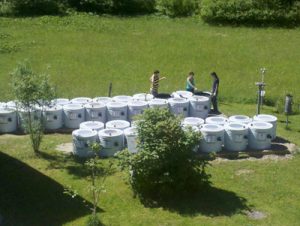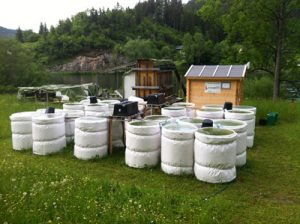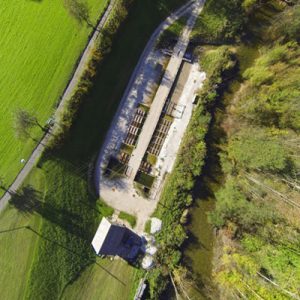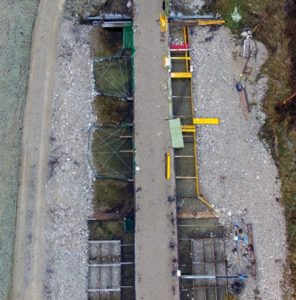1) WCL – WasserCluster Lunz
Dr. Carl Kupelwieser Promenade 5
A-3293 Lunz am See
2) Institute of Hydrobiology and Aquatic Ecosystem Management (IHG)
University of Natural Resources and Life Sciences (BOKU)
Max-Emanuel-Straße 17
1180 Wien
1A) Dr. Robert Ptacnik
1B) Dr. Martin Kainz
2) Ao.Univ.Prof. Dipl.-Ing. Dr. Stefan Schmutz,
Dipl.-Ing. Stefan Auer
1)Please login or request access to view contact information.2)Please login or request access to view contact information., Please login or request access to view contact information.
1A) WCL-Mesocosms-Ptacnik
40 land-based mesososms (320 L each); water pipes for aeration and mixing; exchangeable inner walls; app. 500 m from lake; local tab water suitable for experiments (not chlorinated)
1B) WCL-Mesocosms-Kainz
24 land-based mesososms (400 L each), temperatured controlled, aerated, temperature sensors, remote controlled
2) HyTEC
consists of two large channels (40 m length, 6 m width) fed with nutrient-poor lake water taken at different depths to vary water temperature. Peak flows of up to 600 l/s are produced to mimic hydropeaking, thermopeaking or extreme floods.
Channel size and morphology (slopes, structures substratum, etc.) is alterable, flow can be controlled, various experiments with different biological elements (fish, benthic invertebrates, algae, etc.) can be conducted in parallel (smaller sub-flumes within each large one) short-time and long-time experiments can be done simultaneously
1A) WCL-Mesocosms-Ptacnik
Air flow; possibly shading; nutrient levels
1B) WCL-Mesocosms-Kainz
Temperature, air flow
2) HyTEC
Discharge, ramping rates of discharge, water temperature, substrate, channel morphology
1A) WCL-Mesocosms-Ptacnik
Role of dispersal for maintenance of diversity; diversity-functioning research in plankton communities
1B) WCL-Mesocosms-Kainz
Effects of temperature, heat waves, light, brownification on phytoplankton and zooplankton biodiversity and biochemical composition (elemental stoichiometry, fatty acids)
2) HyTEC
Hydropeaking-related effects on various aquatic organism groups (juvenile fish, macroinvertebrates and development of benthic algae) and ecosystem processes such as litter decay, primary production
Effects of thermopeaking, analyses of multiple pressures (discharge, nutrients and temperature)
Fish protection and fish guidance efficiency (experiments with a flexible fish fence)
1A) WCL-Mesocosms-Ptacnik
Sampling gear; standard water chemistry; meshes for size fractionation; water pre-filtration for filling mesocosms
1B) WCL-Mesocosms-Kainz
Sampling gear, incl. plankton nets, water collection tubes, temperature gauges, heaters, aerators, computer controlled temperature systems, wooden cabin next to mesocosms Access to analyses (with costs)
Elemental analyses of C, N, S, O, H and stable isotopes, TOC analyser
2) HyTEC
Fully automated discharge and water temperature interface, datalogger, flow velocity measurement systems, remote-controlled (IR-) video system, electrofishing devices, sampling gears, several tanks for fish hatchery, etc.
Cooperation with WasserCluster Lunz: experiments (benthic algae), field equipment and laboratory-infrastructure (nutrient analyses, DOC analyses, microscopy, HPLC)
Some guestrooms at WasserCluster Lunz; numerous guesthouses in Lunz am See
 |
 |
 |
 |
 |
